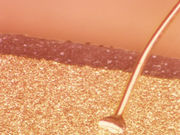Increases and decreases in occurrence of specific skin conditions with El Niño, La Niña
WEDNESDAY, Nov. 18, 2015 (HealthDay News) — The El Niño Southern Oscillation (ENSO) climate phenomenon impacts skin and skin-related disease, according to a review published in the December issue of the International Journal of Dermatology.
Noting that ENSO is a complex climate phenomenon occurring in the Pacific Ocean at intervals of two to seven years, Louise K. Andersen, M.D., from Aarhus University Hospital in Denmark, and colleagues reviewed the literature describing the effects of the ENSO weather pattern on skin.
The researchers note that El Niño (the warm phase of ENSO) has been linked to increases in the occurrence of actinic keratosis; tinea; pityriasis versicolor; miliaria; folliculitis; rosacea; dermatitis by Paederus irritans and Paederus sabaeus; and certain vector-borne and waterborne diseases, such as dengue fever, leishmaniasis, Chagas’ disease, Barmah Forest virus, and leptospirosis. El Niño has also been linked to decreases in dermatitis, scabies, psoriasis, and papular urticaria occurrence. La Niña (the cool phase of ENSO) has been linked to increases in varicella; hand, foot, and mouth disease; and Ross River virus occurrence; as well as with declines in viral warts and leishmaniasis.
“Reports on the effects of ENSO on skin and skin-related disease are limited, and more studies could be helpful in the future,” the authors write.
Copyright © 2015 HealthDay. All rights reserved.








